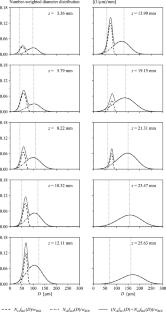Multiscale analysis of the textural atomization process of a rocket engine-assisted coaxial jet
Abstract
A method for analyzing liquid ligaments of a textural atomization process is presented in this article for the case of a rocket engine type-assisted atomization process under combustion. The operating point positions the atomization process in the fiber-type regime carrying an intense textural atomization process. Multiscale in nature, the method based on image analysis associates a scale distribution with a family of ligaments, this distribution being sensitive to the number, size and shape of these ligaments. The quality of scale distributions measured by image analysis depends on the spatial resolution and the precision of area measurements of surfaces with curved boundaries but described by square pixels. Part of the work consisted of improving the method for measuring scale distributions by using a sub-pixel image analysis technique and refining the surface area measurement method. Another part directed the multiscale analysis toward the estimation of the diameter distributions of the blobs that characterize the large-scale deformation of the ligaments. The analysis describes the atomization process at a level of detail never reached. For instance, assuming that the blobs are drops in formation, the estimated diameter distribution (bimodal in the case examined here) and the number of these drops are evaluated as a function of the distance from the injector. This information indicates where the process is most intense and where it stops. Furthermore, these diameter distributions receive a mathematical expression whose parameters report clear evolutions with the distance from the injector. This shows the possibility of elaborating mathematical models appropriate for textural atomization mechanisms.


 求助内容:
求助内容: 应助结果提醒方式:
应助结果提醒方式:


